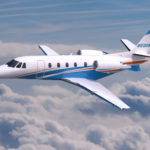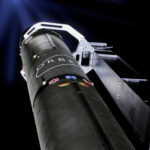GE Aerospace is committed to a more sustainable future of flight through the development of new, breakthrough technologies that improve aircraft engine fuel efficiency and reduce CO2 emissions.
With the aviation industry having set a target for net zero CO2 emissions for commercial flight by 2050, GE Aerospace’s ambition is to help lead the industry’s decarbonisation journey, and hybrid electric-powered propulsion systems are key to this strategy.
Last year, GE Aerospace took a step toward these decarbonisation goals when it announced new technology demonstration programmes with hybrid electric capability.
Megawatt-class hybrid electric propulsion system
In collaboration with NASA, GE is developing a megawatt-class hybrid electric propulsion system for commercial aviation.
And CFM’s RISE (Revolutionary Innovation for Sustainable Engines) programme is maturing a series of technologies that include hybrid electric capability for next-generation single-aisle commercial aircraft engines with 20 per cent better fuel efficiency than the most efficient engines today. CFM is a 50-50 joint company between GE and Safran Aircraft Engines.
Hybrid electric propulsion technologies can help reduce fuel usage, reduce CO2 emissions and optimise engine performance.
SAF, hydrogen and advanced engine architecture
Electrification technologies being developed by GE are also compatible with sustainable aviation fuel (SAF), hydrogen, advanced engine architectures such as open fan, and new compact engine core designs.
With GE Aerospace’s extensive experience, it has been developing hybrid electric systems and electrical power generation and maturing hybrid electric components and technologies in a stepwise manner over the past decade.
These efforts have included separate component tests at ground-level conditions, separate component testing at simulated altitude levels, and, most recently, a full system test with integrated components in simulated altitude conditions up to 45,000 feet.
Partnering with NASA
Throughout this time, NASA has been a key partner.
At this year’s Farnborough International Airshow, GE announced it completed the world’s first test of a megawatt (MW)-class and multi-kilovolt (kV) hybrid electric propulsion system in altitude conditions that simulate single-aisle commercial flight. The altitude integration test of the system was completed at NASA’s Electric Aircraft Testbed (NEAT) facility in Sandusky, Ohio.
Testing of GE’s hybrid electric propulsion system is continuing as part of NASA’s Electrified Powertrain Flight Demonstration (EPFD) project. The research programme will see GE advance hybrid electric systems further for a flight demonstration in the mid-2020s using a modified Saab 340B plane and GE’s CT7 turboprop engines.
When it comes to practical applications, GE Aerospace’s efforts to advance hybrid electric propulsion are targeting technologies for single-aisle commercial aircraft, which transport the most passenger traffic.
Safety meets sustainability
The company believes this has the biggest opportunity to curb CO2 emissions and help the industry reach its goal to be net zero by 2050.
Running throughout all of GE Aerospace’s projects is a focus on safety.
For example, as part of the EPFD program with NASA, GE Aerospace will conduct safety of flight testing that includes electromagnetic compliance testing (EMC), humidity, shock, vibration, and thermal testing, among other types of tests to help validate flight readiness of a hybrid electric propulsion system.
Taken as a whole, GE Aerospace programmes are advancing the future of flight with sustainability at its core.
Subscribe to the FINN weekly newsletter

